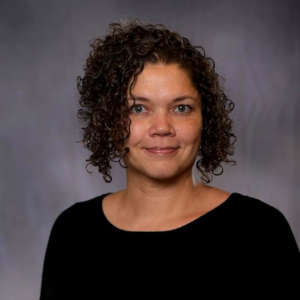Expert Viewpoint
Closing the U.S. Homework Gap Using Unlicensed Spectrum

As schools and colleges closed their doors in 2020 at the start of
the pandemic, more than 55 million students moved to online learning
practically overnight. This shift exposed the extent of the digital
divide in the United States. Almost 17 million students had no access
to the internet in their homes, while many more were impeded by
unreliable internet connectivity and slow speeds. This divide wasn’t
only restricted to rural locations; it was mirrored in towns and
cities too.
Collaborative learning is key for students of any age, contributing
to the development of higher-level thinking, communication and
leadership skills. But remote collaboration requires students to be
able to access classes in real-time. As schools began to open their
doors, social distancing rules forced them to reduce classroom sizes,
leading many to adopt a hybrid learning model that blends in-person
and remote learning. This model offers schools new flexibility,
particularly as uncertainty surrounding the strength of future COVID
variants could impact classroom sizes or force them to close again.
As a result, it’s become even more important to close the homework
gap.

Aimee Rullo, Nokia Business Development Manager, SLED
While billions of dollars had already been invested before 2020, the
pandemic highlighted the need for more. The government responded by
passing legislature that would help address expanded connectivity at
the education, state, local and tribal level. Most recently, the
government passed the Infrastructure Investment and Jobs Act (IIJA)
that includes a large amount of funding dedicated to digital
inclusion and anchor institutions. This investment in technology
helps increase internet connectivity to more communities.
Making spectrum more available
Funding is one aspect of making internet connectivity a reality for
everyone, but when broadband goes wireless, radio spectrum
availability is another one. While it’s clear that even in 2022,
reliable high-speed broadband is still out of reach for some, a
decision taken in 2020 is now making it more accessible and
affordable.
Historically, the cost of licensed spectrum implied that it was only
viable for mobile operators to use in their network rollouts. But in
January 2020, the Federal Communications Commission (FCC) made
Citizens Band Radio Service (CBRS) spectrum in the 3.5GHz band
generally available and free to use. This enabled more private
wireless network deployments and lowered the cost, making it more
affordable for local authorities, school districts and educational
institutions to connect students and communities.
Connecting the unconnected with private wireless in the CBRS
spectrum
Because of this FCC decision, several school districts, as well as
public and private entities, are already working with technology
partners to bridge the digital divide.
The 2019 US Census’ American Community Survey found that almost
53,000 homes in Cleveland, Ohio, didn’t have a broadband
subscription plan. That translated to 31% of the city’s total
households and made it the most underserved city in the United States
with a population of 100,000 or more households. During lockdowns,
this homework gap became more apparent. As such, leading non-profit
organization DigitalC began rolling out a private LTE network using
CBRS spectrum to connect thousands of people around the city.
The CBRS spectrum can also be used to close the digital divide in
rural communities. Where students’ homes are further away from the
schools and colleges they attend, authorities can deploy fixed
wireless access (FWA) technology. In this scenario, a radio link can
be installed on top of a building to direct the signal to customer
premises equipment (CPE) installed outside residential buildings or
within homes to integrate with an in-home Wi-Fi network.
In rural California, as the Dos Palos-Oro Loma (DPOL) school district
put a distance learning plan in place in 2020, it found it could only
provide coverage for 50% of students via commercial wireless
networks. Now, it’s using 4G LTE FWA technology operating in the
CBRS spectrum to deliver high-performance internet to 2,400 students’
homes in the San Joaquin Valley.
Other education facilities and local authorities are also benefiting
from the decision by the FCC. In Illinois, Collinsville Community
School District #10 used CARES funding to deploy a private LTE
network, giving approximately 500 students in the Fairmont City and
State Park communities equal access to the internet at home and
school.
Fresno Unified School District, the third-largest district in
California, also decided to adopt private LTE to improve digital
connectivity. Towers were installed at 15 schools, supporting up to
10,000 users. The network can only be accessed by students with
district-issued appliances.
Enhancing homework and in-person collaboration
The 4G and 5G powered private wireless networks such as these won’t
only allow students to collaborate remotely in real-time. Those in
previously underserved communities will also benefit from a reliable,
high-speed internet connection to easily complete homework
assignments and research and apply for colleges and jobs. And, as the
trend for working from home continues beyond the pandemic, they’ll
be afforded even greater choice in the roles they can apply for.
But it’s not just virtual collaboration that is positively
impacted; private wireless networks also enable new capabilities such
as augmented reality (AR) and virtual reality (VR) to enhance the
user experience within the school and work environment.
With the ability to leverage the CBRS spectrum, cost-effective,
reliable internet connectivity is now being made possible for those
in previously underserved rural locations, towns and cities. As
network rollouts gain traction, the U.S. homework gap will begin to
close, and CBRS will serve the citizens that it was always intended
for.
About the Author
Aimee Rullo is Nokia Business Development Manager, SLED. Aimee joined Nokia as a Business Development Manager for Private Wireless heading up the Education segment. She is responsible for identifying and helping develop new business utilizing Nokia’s Digital Automation Cloud (NDAC). Aimee has been a leader in the technology industry for over 20 years. She has extensive experience working for global and regional carriers, selling, and helping design networks. She has worked with Government, Education and Enterprise customers, helping address their needs and setting them up for success. Aimee attended the University of Colorado Denver.